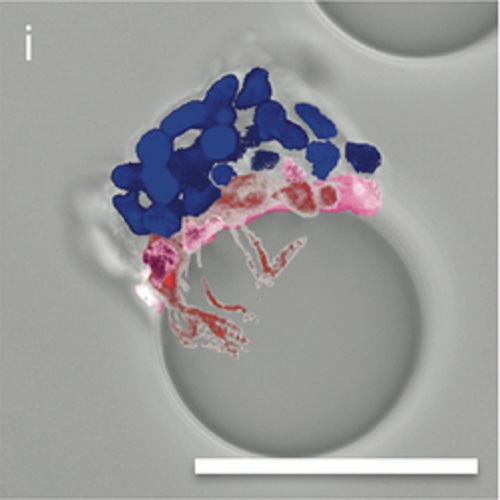Colloids as mobile substrates for the implantation and integration of differentiated neurons into the mammalian brain.
Neuronal degeneration and the deterioration of neuronal communication lie at the origin of many neuronal disorders, and there have been major efforts to develop cell replacement therapies for treating such diseases. One challenge, however, is that differentiated cells are challenging to transplant due to their sensitivity both to being uprooted from their cell culture growth support and to shear forces inherent in the implantation process. Here, we describe an approach to address these problems. We demonstrate that rat hippocampal neurons can be grown on colloidal particles or beads, matured and even transfected in vitro, and subsequently transplanted while adhered to the beads into the young adult rat hippocampus. The transplanted cells have a 76% cell survival rate one week post-surgery. At this time, most transplanted neurons have left their beads and elaborated long processes, similar to the host neurons. Additionally, the transplanted cells distribute uniformly across the host hippocampus. Expression of a fluorescent protein and the light-gated glutamate receptor in the transplanted neurons enabled them to be driven to fire by remote optical control. At 1-2 weeks after transplantation, calcium imaging of host brain slice shows that optical excitation of the transplanted neurons elicits activity in nearby host neurons, indicating the formation of functional transplant-host synaptic connections. After 6 months, the transplanted cell survival and overall cell distribution remained unchanged, suggesting that cells are functionally integrated. This approach, which could be extended to other cell classes such as neural stem cells and other regions of the brain, offers promising prospects for neuronal circuit repair via transplantation of in vitro differentiated, genetically engineered neurons.
Back to list
